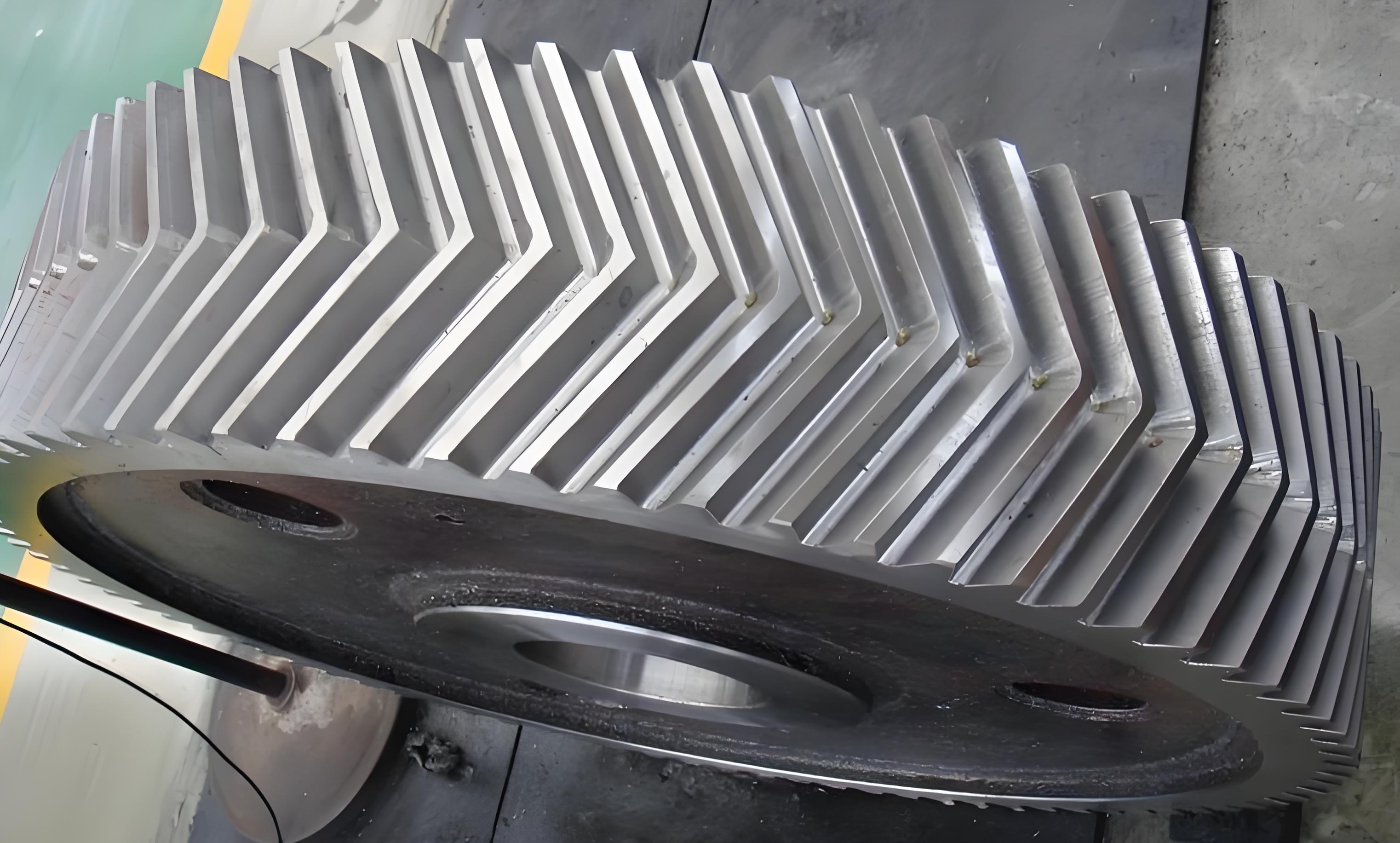Abstract
Herringbone gear is widely used in high-speed and heavy-load applications due to their strong load-bearing capacity, high contact ratio, and reliability. This paper explores the nonlinear dynamic characteristics of high-speed and heavy-load herringbone gear transmissions. By gradually increasing the external excitation frequency, the system’s motion transitions from single-period motion to chaotic motion and then returns to single-period motion. To ensure stable operation, the external excitation frequency should be carefully selected.

1. Introduction
Herringbone gear eliminate the additional axial load during the meshing process of helical gear, increase the contact ratio, and make the meshing smoother. Therefore, they are often used in the power transmission systems of armed helicopters. Analyzing the nonlinear dynamic characteristics of herringbone gear systems, exploring the influence of various factors on nonlinear behavior, and identifying stable operating ranges can provide references for herringbone gear system design.
2. Dynamics Model of Herringbone Gear System
The dynamics model of the herringbone gear system considers factors such as transmission errors, time-varying meshing stiffness, and backlash. It also takes into account the clearance between the rolling elements of the bearings and the inner and outer raceways, as well as the nonlinear vibration of the bearings. The model is a multi-degree-of-freedom coupled vibration model.
Table 1. Parameters of the Herringbone Gear and Bearings
| Parameter | Symbol | Value | Unit |
|---|---|---|---|
| Mass of right driving herringbone gear | m1 | – | kg |
| Mass of left driving herringbone gear | m3 | – | kg |
| Moment of inertia of right driving herringbone gear | I1 | – | kg·m² |
| Moment of inertia of left driving herringbone gear | I3 | – | kg·m² |
| (Other parameters omitted for brevity) |
3. Time-Varying Excitations
3.1 Time-Varying Meshing Stiffness and Meshing Force
The time-varying meshing stiffness K_m(t) and the meshing force F_m can be calculated as follows:
3.2 Time-Varying Bearing Support Force
The bearing supports the rotating components, and the internal bearing forces affect the nonlinear response of the system. The calculation method for bearing loads in the herringbone gear system model is described below.
4. Nonlinear Dynamic Response of the Herringbone Gear System
4.1 System Response under Different Torques
By selecting a rated input torque of 150 N·m and varying other system parameters, the trends in system dynamic responses can be investigated. The system responses under different torques.
Table 2. System Responses under Different Torques
| Torque (N·m) | Vibration Velocity Peak of Meshing Line 1 (μm/s) | Vibration Velocity Peak of Meshing Line 2 (μm/s) |
|---|---|---|
| 150 | 5.2 | 0.27 |
| 200 | – | 0.33 |
| 250 | – | – |
| 300 | 4.5 | 5.3 |
4.2 System Response under Different Meshing Damping
The system responses under different meshing damping coefficients.
4.3 System Response under Different Backlash
By varying the backlash b_m while keeping other system parameters constant, the nonlinear displacements of meshing line 1 and meshing line 2 can be observed. Figure 5 shows the system responses under different backlashes.
4.4 System Response under Different Meshing Stiffness
(Additional analysis and figures can be included here for different meshing stiffness values, but they are omitted for brevity.)
Conclusion
This paper presents a comprehensive nonlinear dynamic analysis of high-speed and heavy-load herringbone gear transmissions. By considering factors such as time-varying meshing stiffness, backlash, and bearing support forces, the dynamics model is established. The influences of different parameters on the stability of the system are explored through numerical simulations. The results provide insights into the nonlinear dynamic characteristics of herringbone gear transmissions and can guide the design of gear systems for stable operation.
